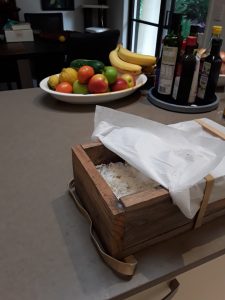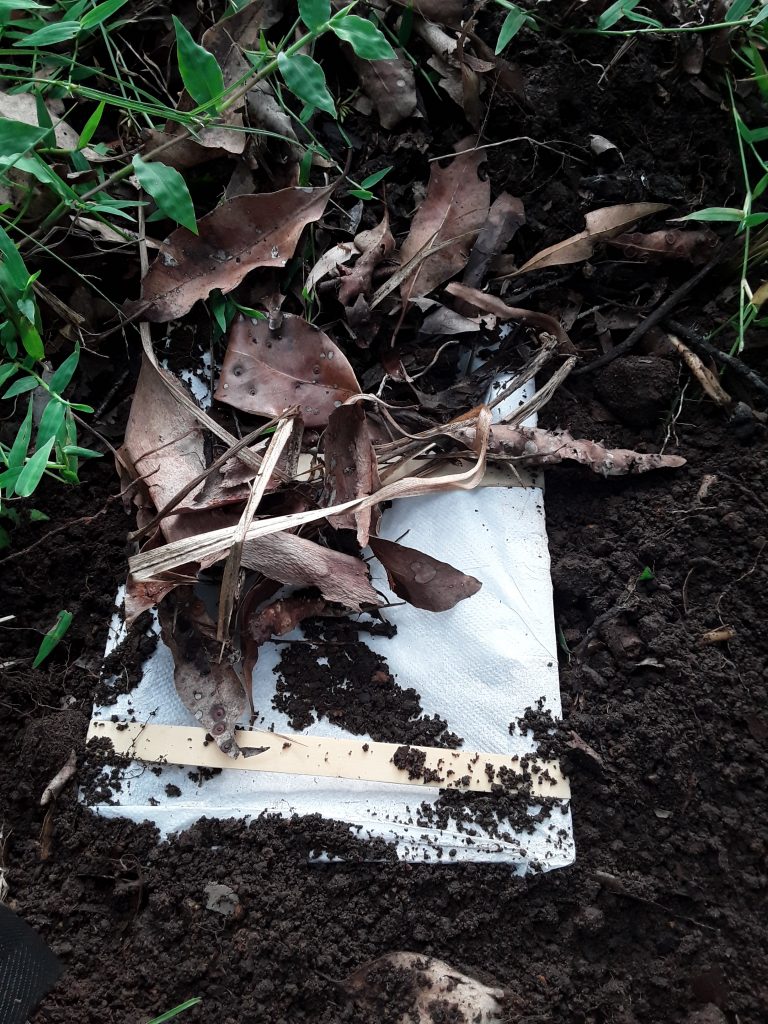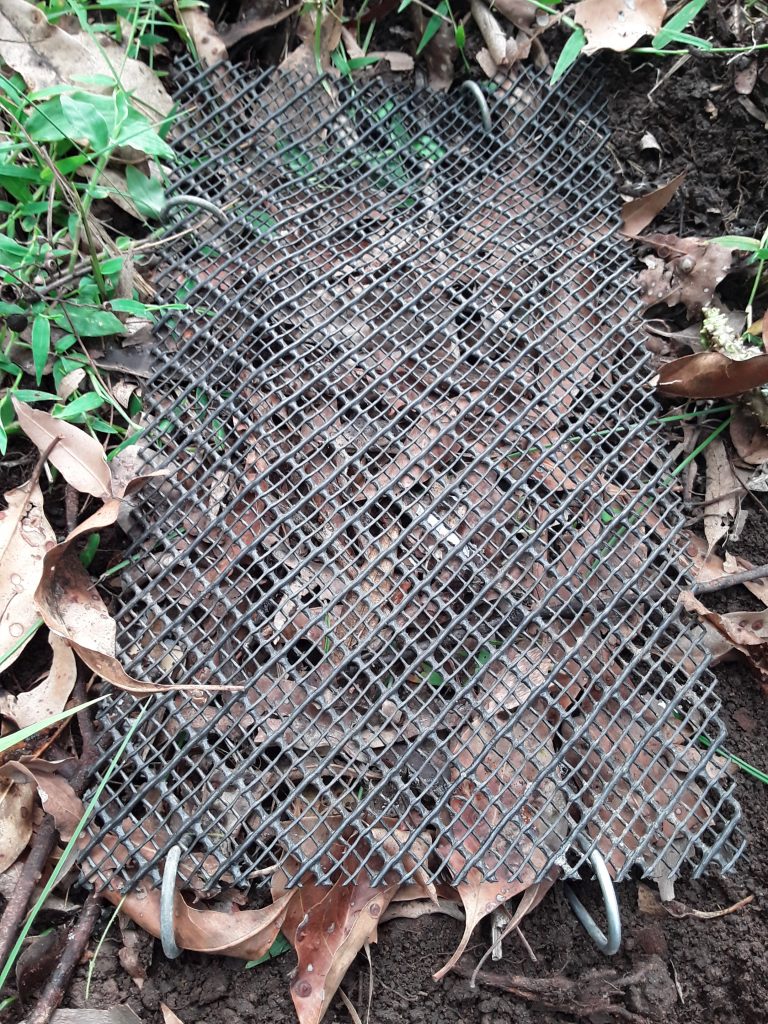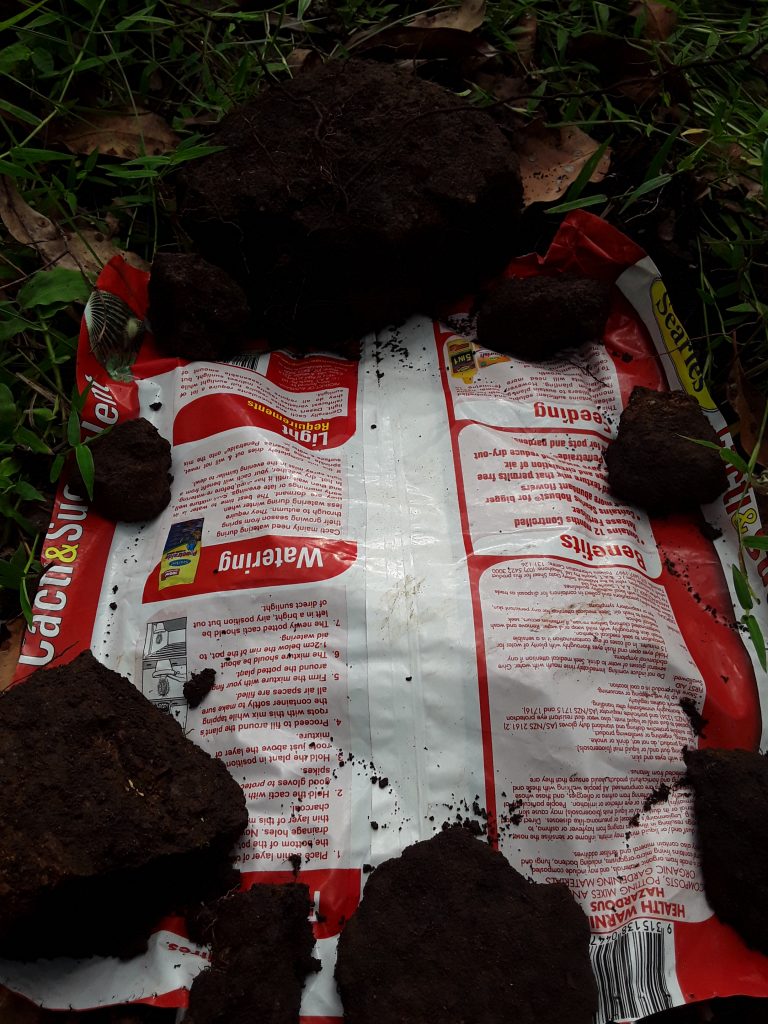Pre-made EM bokashi can be purchased, but micro-organism may also be collected from the local environment. These organisms can be collected free of charge and may be better adapted to local conditions. The collection process takes approximately 4–5 days in cooler weather (that’s subtropical cool – about 68°F, 20°C) and 3–4 days under warmer conditions (> 68°F, 20°C).
To determine the best site for collecting micro-organisms, ask yourself, “Where is the best soil on my property?” In my case, the best soil is under the leaf litter in our forest remnant. This soil is loamy and a rich chestnut brown. But I also collect from beneath the pasture and near the seasonal creek, combining microbes from multiple sites to produce a robust culture. Do not collect micro-organisms in the vicinity of diseased plants.
Soil Micro-organisms
Collection Materials
- a small wooden box, 12 x 4 x 4 inches, preferably made of a rot resistant wood such as cedar. Be sure not to construct the box from pressure treated wood. A heavily perforated plastic take-away container is a workable substitute.
- steamed white rice – cheap grocery store rice will suffice. (wash the rice before steaming and collect the wash water).
- white paper towels, enough to cover the wooden box
- two to four large rubber bands
- sheet of clear plastic, large enough to completely cover the wooden box
- 1⁄4-inch mesh wire screen large enough to completely cover the wooden box with a 2 inch margin.
Collect Soil Micro-organisms
 Fill the wooden box with 3 inches of steamed rice.
Fill the wooden box with 3 inches of steamed rice.- Cover the box with white paper towels, being careful not to let the towels touch the rice. Leave an inch or so of air space between the rice the paper towels. Secure the paper towel to the box with the rubber bands.



- Bury the box in the soil at least 2 inches deep. Cover the box with fallen leaves from the harvest location.
- Cover the top of the box with wire screen to prevent animal intrusion. Anchor wire screen with garden stakes.
- Top the wire with a sheet of clear plastic to protect the box from rain. Anchor the plastic sheet on all sides with small rocks.
- In 5 days, check for growth. The rice should be covered with white mold.
- If mold growth is sparse, re-cover and incubate an additional 2–3 days before re-checking.
Culturing Soil Micro-organisms


- On a scale, tare (zero the weight of) a large bowl.
- Transfer the rice from the wooden box to the bowl with a spoon.
- Record the weight of the rice.
- Wearing gloves, hand-knead an equal weight of brown sugar into the rice until the sugar and rice has the consistency of gooey molasses.
- Fill the clean clay pot two-thirds full with the rice/sugar mixture.
- Cover with a paper towel and secure the towel with rubber bands.
- Store the pot in a cool area away from direct sunlight for 7 days, allowing fermentation.
Collecting Micro-organisms from the Air
Collection Materials
- Rice-washing water (see above)
- Cow’s milk (preferably raw but at least organic)
- Jagerry, raw, or brown sugar
- Glass or clay jar
- Paper towel or cheese cloth
- Rubber band or string
- Pour rice washing water into the jar, 15 to 20 cm deep.
- Cover the mouth of the jar with a paper towel or cheese cloth. Secure with rubber band or string.
- Leave in shade or pantry (23 – 25 degrees C) for three days.
- Add 3 times the volume of milk to the rice water.
- In 3 to 4 days, the jar will have three divided layers
- a) floating flocculant material
- b) clear liquid and
- c) bottom debris.
- Remove the floating material with a slotted spoon.
- Strain yellow liquid away from other debris.
- Store in a lidded bottle or jar and refrigerate.
Adapted from Biotechnology Aug. 2008 [slightly revised, June 2010] BIO-9, How to Cultivate Indigenous Microorganisms